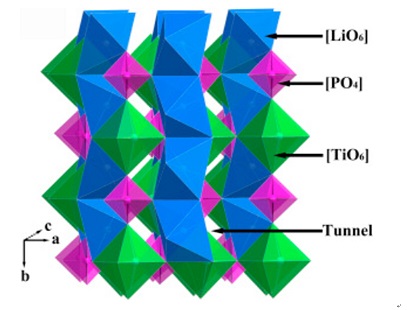Yu Fua, Hai Minga, Shiyong Zhaoc, Jun Guoc Muzi Chend Qun Zhoua *(周群), Junwei Zhenga, b, *(郑军伟)
a College of Chemistry, Chemical Engineering and Materials Science, Soochow University, Suzhou 215123, PR China
b College of Physics, Optoelectronics and Energy, Soochow University, Suzhou 215006, PR China
c Zhangjiagang Guotai Huarong New Chemical Material Co., Ltd., No. 112, Chengdong Road, Zhangjiagang, PR China
d Analysis and Testing Center, Soochow University, Suzhou 215123, PR China
Electrochimica Acta,Volume 185, 10 December 2015, Pages 211–217
Lithium titanium oxyphosphate LiTiOPO4 is synthesized by a solution route and modified with a carbon layer using polyvinylidene difluoride as carbon source. It is demonstrated that the performance of LiTiOPO4 strongly depends on cycling potential range. In the potential range from 0.5 to 3.0 V, limited capacity (less than 161 mA h g−1) is obtained, which is ascribed to a mechanism involving the insertion of lithium ions into vacant sites of crystalline structure. As the cut-off potential is set down to 0.1 V, a conversion of LiTiOPO4 occurs in the initial cycle, as a result, a relative high and reversible capacity of 285 mA h g−1 at the current rate of 0.1 C can be achieved during the subsequent cycles. However, resembling that of transition metal oxides, possible charging/discharging mechanism, in this case, may involve the formation and decomposition of Li2O formed in the conversion of LiTiOPO4. The new strategy also enables LiTiOPO4 as the electrode material with superior cycleability and rate capability of 195 mA h g−1 at the current rate of 2.0 C. The results indicate that carbon-coated LiTiOPO4 could be a promising anode material with relative high capacity and good rate capability for lithium ion batteries.

链接://www.sciencedirect.com/science/article/pii/S0013468615307052